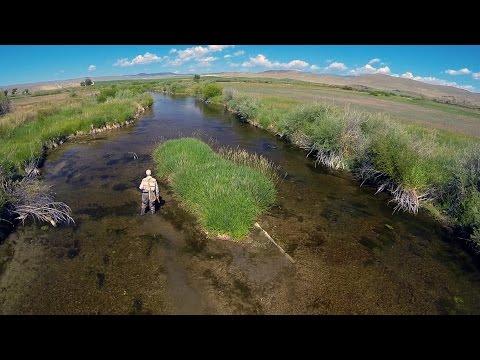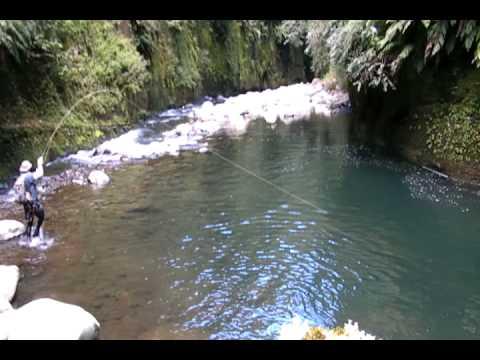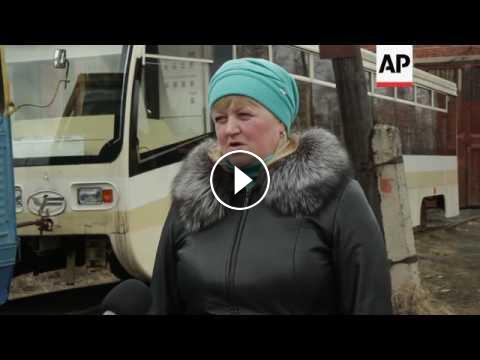(9 May 2017) LEADIN
In the heart of the Russian Ural mountain range, deep in the sub arctic forest known as the Taiga, lies the town of Volchansk.
It is an unremarkable town, but it has one claim to fame... it is the smallest town in Russia with its own tram service.
STORYLINE
Welcome to Volchansk, best known as Russia's smallest town with its own tramway.
A single-track 7.5-kilometer line connects the northern and the southern part of the town.
Costing just 30 US cents per ride, the tram carries up to 300 people on a weekday, running across town once an hour on old crooked rails.
In 1956, Volchansk was granted the township status after it expanded 6 kilometers north to compounds where coal, and before that gold mines, had been located.
The tram system, along with much of the town's infrastructure and industrial facilities, was constructed by German prisoners of war during and after World War II.
The tram system became operational in 1951 and initially ran along three routes transporting workers to industry.
One of the lines led to an opencast colliery, another, a cross-city line to the neighbouring town of Karpinsk 35 kilometers away.
The former was closed in 1994 due to theft of the rails and trolley wire while the latter was dismantled less than 10 years after the opening because it was in the way of a large working excavator.
The third, a 7.5-kilometer route, still crosses the town north to south.
Some residents still remember when the tramcars were full of people, and they had to hitch an extra car.
However the population of Volchansk has decreased steadily from 36 thousands of people in 1973 to under 10,000 today as the descendants of the WWII prisoners of war who constituted the majority in the town have moved to Germany.
Larisa Bushuyeva, the director of the tram line, adds that tram lost many of its passengers to buses and private cars.
"The thefts began (in 1990s): once a rail was detached and carried away, another time (a piece of) wire was stolen. And it (the tram) became unprofitable - people had been leaving the town. Are we to drive empty trams ? We decided one would be enough. Then buses appeared here. And accordingly all of them are faster and more convenient. People preferred another type of transport. Now we work as an antiquity."
All this makes the tram service unprofitable; every year local and regional authorities fund about $180,000 to maintain the line.
Four kilometers of the line between the two towns pass through part of the thick forest known as taiga that stretches from the Ural Mountains to the Far East.
The passengers often use the tram just to enjoy the forest view or to go there for fishing and mushroom picking.
Tram driver Galina Fyodorova says "here (in the forest) nobody gets on or gets off. Only mushroom-gatherers in summer."
Despite of perceptible shaking and loud noise inside, people love this transport mainly because it has a fixed schedule making it more reliable than local buses.
"It's faster by bus. (But) if you have an appoinment, you have to walk and wait (for bus), but by tram you reach (your destination) in time (knowing the schedule)." says passenger Margarita Faber.
In 2009 Volchansk was recognised by the "book of records of Russia" as the "smallest town with tramway transportation".
Their plan to raise the claim to Guinness World Records was thwarted when they discovered a smaller town in Germany with a similar tram.
You can license this story through AP Archive: http://www.aparchive.com/metadata/youtube/e9a4c2d39f85e75abe9ac0e241985252
Find out more about AP Archive: http://www.aparchive.com/HowWeWork
In the heart of the Russian Ural mountain range, deep in the sub arctic forest known as the Taiga, lies the town of Volchansk.
It is an unremarkable town, but it has one claim to fame... it is the smallest town in Russia with its own tram service.
STORYLINE
Welcome to Volchansk, best known as Russia's smallest town with its own tramway.
A single-track 7.5-kilometer line connects the northern and the southern part of the town.
Costing just 30 US cents per ride, the tram carries up to 300 people on a weekday, running across town once an hour on old crooked rails.
In 1956, Volchansk was granted the township status after it expanded 6 kilometers north to compounds where coal, and before that gold mines, had been located.
The tram system, along with much of the town's infrastructure and industrial facilities, was constructed by German prisoners of war during and after World War II.
The tram system became operational in 1951 and initially ran along three routes transporting workers to industry.
One of the lines led to an opencast colliery, another, a cross-city line to the neighbouring town of Karpinsk 35 kilometers away.
The former was closed in 1994 due to theft of the rails and trolley wire while the latter was dismantled less than 10 years after the opening because it was in the way of a large working excavator.
The third, a 7.5-kilometer route, still crosses the town north to south.
Some residents still remember when the tramcars were full of people, and they had to hitch an extra car.
However the population of Volchansk has decreased steadily from 36 thousands of people in 1973 to under 10,000 today as the descendants of the WWII prisoners of war who constituted the majority in the town have moved to Germany.
Larisa Bushuyeva, the director of the tram line, adds that tram lost many of its passengers to buses and private cars.
"The thefts began (in 1990s): once a rail was detached and carried away, another time (a piece of) wire was stolen. And it (the tram) became unprofitable - people had been leaving the town. Are we to drive empty trams ? We decided one would be enough. Then buses appeared here. And accordingly all of them are faster and more convenient. People preferred another type of transport. Now we work as an antiquity."
All this makes the tram service unprofitable; every year local and regional authorities fund about $180,000 to maintain the line.
Four kilometers of the line between the two towns pass through part of the thick forest known as taiga that stretches from the Ural Mountains to the Far East.
The passengers often use the tram just to enjoy the forest view or to go there for fishing and mushroom picking.
Tram driver Galina Fyodorova says "here (in the forest) nobody gets on or gets off. Only mushroom-gatherers in summer."
Despite of perceptible shaking and loud noise inside, people love this transport mainly because it has a fixed schedule making it more reliable than local buses.
"It's faster by bus. (But) if you have an appoinment, you have to walk and wait (for bus), but by tram you reach (your destination) in time (knowing the schedule)." says passenger Margarita Faber.
In 2009 Volchansk was recognised by the "book of records of Russia" as the "smallest town with tramway transportation".
Their plan to raise the claim to Guinness World Records was thwarted when they discovered a smaller town in Germany with a similar tram.
You can license this story through AP Archive: http://www.aparchive.com/metadata/youtube/e9a4c2d39f85e75abe9ac0e241985252
Find out more about AP Archive: http://www.aparchive.com/HowWeWork
- Category
- Fly Fishing




